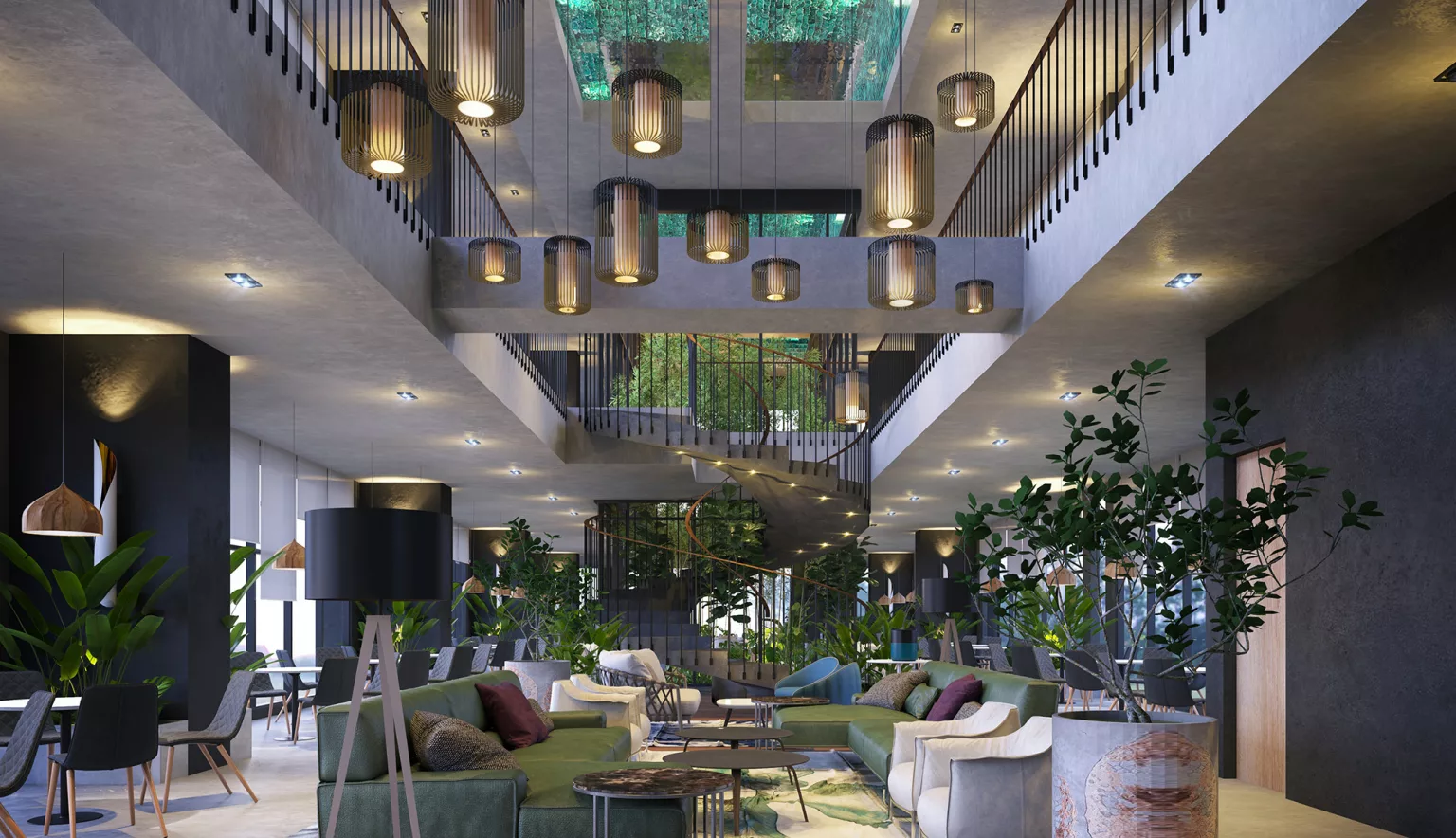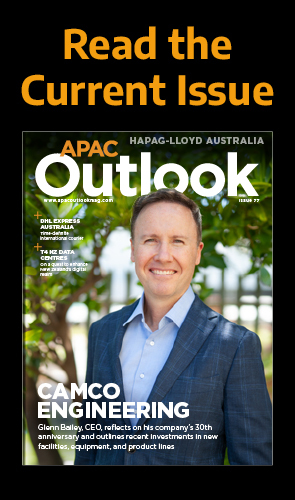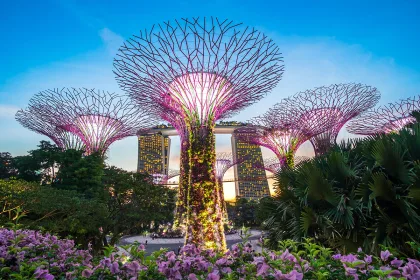Having arrived in Malaysia on a mission to prove a concept in 2011, Melvin Lim has enjoyed a remarkable growth story with Mun Shung & Partners, the architecture firm built on a passion to transform communities.
PUTTING PEOPLE FIRST
Opportunities in this region, especially in Malaysia, are vast! Having worked in the country for the last seven years, the expansion of both private and commercial activity I have seen has produced a huge amount of opportunity in the country.
“The growth rate and the maturity within the construction industry creates fantastic prospects for companies like ours, albeit a huge amount of competition at the same time. However, this is healthy and keeps you on your toes, forcing you to constantly seek better ways to improve products and services.
“Even in our building industry there is still much room to evolve into, not only as brick and mortar investment, but contents and user experience which is now more important than ever. And that, I would suggest, means a vastly vibrant future awaits.”
Melvin Lim is, rightly, a stout optimist when it comes to Malaysia’s construction scene.
A key contributor to an economy that is growing consistently at well over five percent a year, the sector’s advancement is reflective of the country’s journey towards becoming a high-income nation, a feat which is expected to be realised as early as 2024.
Melvin is Founder and Design Director of architecture firm Mun Shung & Partners, the Asian branch of UK-based Barton Willmore known as BWLim International until 2018.
Established in 2012 after he arrived back in his home country from London, even Melvin would admit that the company which stands today is unrecognisable from the daunting challenge he initially walked into – to prove Malaysia could work for Barton Willmore and create a failproof business plan inside six months.
“My team consisted of just me,” he quips, “an individual who had never worked in the country before with zero contacts and very limited funds.
“Instead of an expansion plan, as horrifying as it sounds, it did feel like I was setting up my own practice. Days turned into weeks and months felt like years. It was hard, hard work having to acclimatise to the business culture in the shortest possible timeframe, and to make ends meet with no local experience.”
Melvin’s leap of faith paid off in a remarkable way.
Within eight months he had enquiries for 12 project feasibilities, and by the time a year had elapsed the venture had secured several contracts on developments worth more than 500 million Malaysian Ringgit ($123 million).
Fast-forward to today, and Mun Shung & Partners is operating from a second office in Melaka, the firm engaged on a tremendous variety of projects, from residential and commercial to mixed-use and interior design work, both in Malaysia and the UK.
FOR THE GREATER GOOD
The past seven years, by Melvin’s own admission, could have been foreseen in his earlier days.
“I almost fell into architecture, if I’m honest,” he recalls. “I grew up with a family of teachers and engineers, and I remember when asked during my early teens that I always wanted to be a doctor and save lives – I even pursued full science subjects for my A-levels.
“But my creative side got the best of me eventually, when I was offered a scholarship and a place in the Greenwich University to read architecture.”
Melvin’s desire to impact lives for the better has never left him, a passion that was rekindled during his tenure with Barton Willmore in London.
“It was then I witnessed how design does matter and how it affects people,” he continues. “I realised the profession plays a vital role within the building industry, one that inevitably affects lifestyles and the way we live.
“I am not referring to the colour of your roof or where one would place their dining table, but the ability to be at the forefront of any development, and how we are able to make design decisions that enables a safe neighbourhood to be created.
“I find it most intriguing to see the full process from sketch paper proposals to the completion of the built environment unfold, and how these new streets and homes or offices are then occupied.”
This people-centric passion and attitude filters through the whole of Mun Shung & Partners and what it stands for today. Community engagement is vital, Melvin bringing to Malaysia the lessons he learned in the UK, where communication with stakeholders is an essential part of the planning process.
The Founder and Design Director identifies the Embique Condotel development as proof of this approach in action.
A residential condotel precinct in Melaka comprising one- and two-bedroom suites, the building’s design is just the surface of what the client, HLT Land Sdn Bhd, wanted to create.
As well as developing a safe, modern and characterful neighbourhood for people to live in, HLT was determined to build a brand, a reason for knowing Embique that would reverberate beyond the residents occupying its range of apartments.
In response, Mun Shung & Partners created Bique Fest, Melaka’s largest curated weekend art bazaar.
Centred around an interactive experimental dome, it carried the tagline ‘Unique Moments, Unique Journeys, Unique Living’, designed to attract a large cross-section of people to the site.
“This is all about connecting the community through arts and culture and embracing Embique’s unique fusion of nature and design with Melaka’s creative and gastronomic scene,” Melvin says. “It was held over four weekends of site activation showcasing local artists, designers and entrepreneurs to the community.”
The results were beyond expectation. In the space of a month the Bique Fest brand built up a reach of more than half a million people with an engagement rate of over 55 percent with 25-54-year-olds in the southern region of Malaysia.
PROJECT PRIDE
Embique aside, Melvin points to a number of other projects which have proven to be landmarks for him personally, lessons from which he has brought to Malaysia and Mun Shung & Partners from his time at Barton Willmore’s London practice.
First is Poplar Business Park. Situated in the London borough of Tower Hamlets, it proposes a redevelopment of the existing site to an urban village scheme with the inclusion of the village’s square at its heart. Other significant features include a new office complex, light warehousing facilities, more than 300 residential units and a hotel and restaurant.
“The square serves as one of our key features for this development,” says Melvin. “It is designed to be highly accessible and safe and to create a natural identity for the local community.
“Understandably, community involvement was vital when getting feedback and comments woven within the architecture of the development. Key to gaining that planning permission for this project, we believe, was the additional community engagement introduced during the design process which, ultimately, formed part of our strategic development framework for the scheme.”
North of London, in seaside town Grimsby, Barton Willmore has been guiding the FreshneyGreen Estate Regeneration Programme for over five years with Stamford Homes, Shoreline Housing Association and local authorities.
Once again, consultation with local residents, especially younger generations, was vital in securing enthusiasm for the proposals, which are helping to transform an area once labelled as a blight on the area with a worrying crime rate.
“The plan for Freshney Green was to redevelop the area with new homes, however, that involves moving some of the residents,” explains Melvin.
“During the engagement, we found a huge amount of vandalism in the area, and one of our ideas to tackle the was to build a ‘graffiti house’ for the community. The interesting part of this was that the idea came from a six-year-old girl, who was taking part in the draw your home activities.
“Freshney Green was once seen as an eyesore to the neighbourhood, and it is now a fully-grown residential development with its own formed community and sustained house prices.”
These projects represent important learnings for Melvin, the Embique project demonstrating how he has been able to transfer the emphasis on community engagement seen in the likes of Poplar and Freshney Green to Mun Shung & Partners’ work in Malaysia.
A similarly momentous project for the company was Hatten Satori, another mixed-use scheme which paved the way for the firm to secure its first masterplan development under the same client.
Satori, meaning enlightenment in Japanese, combines health, wellness, beauty and leisure in one destination. The main architectural features are the curvilinear towers which house a premium wellness hotel and serviced apartments, a mall and over 50 health and wellness themed facilities.
Its pedigree is no better demonstrated than by a series of awards, Satori scooping three prizes at the Asia Pacific Property 2019 event – Best Mixed-use Architecture Malaysia, Best Hotel Architecture Malaysia and Best Mixed-use Development Malaysia.
Though tremendously proud, Melvin is the first to admit that such accolades could not have been secured alone.
He highlights the indispensable role of partner companies, chiefly construction contractors which are responsible for bringing ideas to life.
“The tender process is a vital part of any project planning,” the Founder says. “Tender interviews and the contract documentation allow us to carry out all due diligence when selecting the right contractors for the job.
“Undoubtedly, finding the right contractor for the job is highly crucial. Some of our partners have been working with me since my UK tenure back in 2005, and we work well together. However, every job differs and may require different people to come on board.”
Such collaborations will be critical moving forwards. Melvin also revealed an exciting and highly valued masterplan development in Kuala Lumpur, and potentially a game-changer for both Mun Shung & Partners and the city. The scheme is currently in the final stages of feasibility and will be making headlines in the development sector.
STAYING ON-TREND
Securing (and delivering) on future landmark projects will require the company to stay ahead of the curve and continue differentiating itself from what is a competitive design landscape.
The digital revolution is firmly on Melvin’s radar, the advancement of autonomous technologies and convenience-driven lifestyles now critical factors for architects to consider.
“In my view, the sector has a lot of catching up to do,” he says. “I can only envision the need for our practice to continue venturing into the ever growing need to engrave user-experience within our designs as if our lives depend on it.
“AI and smart solutions are the next big thing that is impacting the building industry – they now have the ability to print houses! Front doors no longer need keys, a fridge orders your milk for you when close to empty, and homes can talk and entertain you without lifting a finger.
“If shutting out blinds and switching lights off before we leave home is now considered the traditional way, then we as architects and designers of cities and neighbourhoods will also need to acclimatise.”
The company itself is already adapting. For example, it has been able to print 3D models of its designs in its studio for five years, a breakthrough which marked the beginning of a new modern era.
Anticipating the next wave of advances is now key for Mun Shung & Partners, one of several priorities for the year ahead as Melvin brings the conversation to a close.
“I would like the team to continue being more robust with our design ambitions and to keep producing more interesting scheme proposals to suit the current and ever demanding market trends,” he says. “We will be investing more time and effort to incorporate more advanced software and AI technology into our design methods and processes, thus giving us more time to design.
“We will certainly continue to inspire more community engagement activities within our work, as well as push forward for more exploration and experiential design methods. It will be an exciting year.”





































